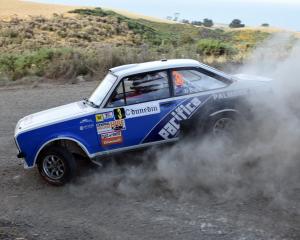
It is a colourful story of colonial rivalry, an “oft-told history”, wrote a Star reporter in 1919, of a British and a French warship racing down from the Bay of Islands to annex the Banks Peninsula for their respective monarchs. But over those frequent retellings, says Lynda Wallace, director of Akaroa Museum, that story has been embellished.
“Akaroa almost did become a French colony,” she tells Frank Film, “but the popular idea that there was a race for Akaroa is an exaggeration.”
The French chapter of this colonial tale begins in 1838 when French whaler Jean Langlois sails into Lyttelton harbour and negotiates the purchase of most of Banks Peninsula from local Māori for 1000 francs. Langlois doesn’t negotiate with anyone else from the region, but to show his commitment he puts down a deposit of 150 francs, paid in goods – “hats, shirts, trousers – and a pistol,” says Wallace. On returning to France, he ramps up financial support for his colonial venture and draws together a group of 63 settlers, mainly French but with some Germans, willing to establish a far-flung French settlement in Nouvelle-Zélande.
The Comte de Paris sets sail in early March 1840. It is accompanied by a French naval vessel, the Aube, captained by Charles Lavaud, to look after the interests of the settlers and to keep tabs on the French whalers already active on New Zealand shores.
What they don’t know, says Wallace, is that, just over a month earlier, the Treaty of Waitangi has been signed and British sovereignty proclaimed over all of Aotearoa New Zealand.
Lavaud has his first inkling of this when he anchors L’Aube in the Bay of Islands and meets Lieutenant-Governor Hobson.
On hearing of Lavaud’s colonial aspirations, Hobson decides to send a British naval ship, the Britomart, to Banks Peninsula, to make sure that any foreign national coming into Akaroa Harbour, explains Wallace, would be in no doubt that the British were here first.
“It was this trip from the Bay of Islands to Banks Peninsula that has given rise to the idea or the exaggeration of a race for Akaroa because these two captains were coming down to Banks Peninsula as quickly as they possibly could.”
The Britomart sailed into Akaroa Harbour on 10 August 1840. Five days later L’Aube sailed into the deep bay then two days after this, on 17 August, the Comte de Paris, finally laid anchor. The small group of settlers, mostly poor, with few possessions, had no idea, says Wallace, they were arriving in a country they had no hope of colonising. “As the passengers of the Comte de Paris sailed up the harbour,” says Wallace, “they must have been so disappointed to find the Union Jack flying from the flag pole.”
But the promised allocation of five-acre (two-hectare) properties – long thin sections running up the surrounding hills – per family was upheld and for a few short years the settlers, boosted by crew members from L’Aube, made up the majority population of Akaroa.
British settlers and, later, bach owners soon dominated the town, now with a population of around 750, but the French connection lingers on. The street names – Rue Jolie, Rue Lavaud, Rue Benoit – are the result of a promotions programme in the 1960s to attract more tourists to the town and “play on its French-ness”, but more authentic details of Akaroa’s French history lie in the 12-metre width of Rue Lavaud – a convention in France at the time – and the outdoor shutters and hipped roof of the historic Langlois-Eteveneaux Cottage, the last remaining French colonial building, now attached to the Akaroa Museum.
As Wallace says, “The French story is very important to Akaroa still. It’s unique in New Zealand. There is no other town in New Zealand where there was an attempt at a French settlement.”
By Sally Blundell













